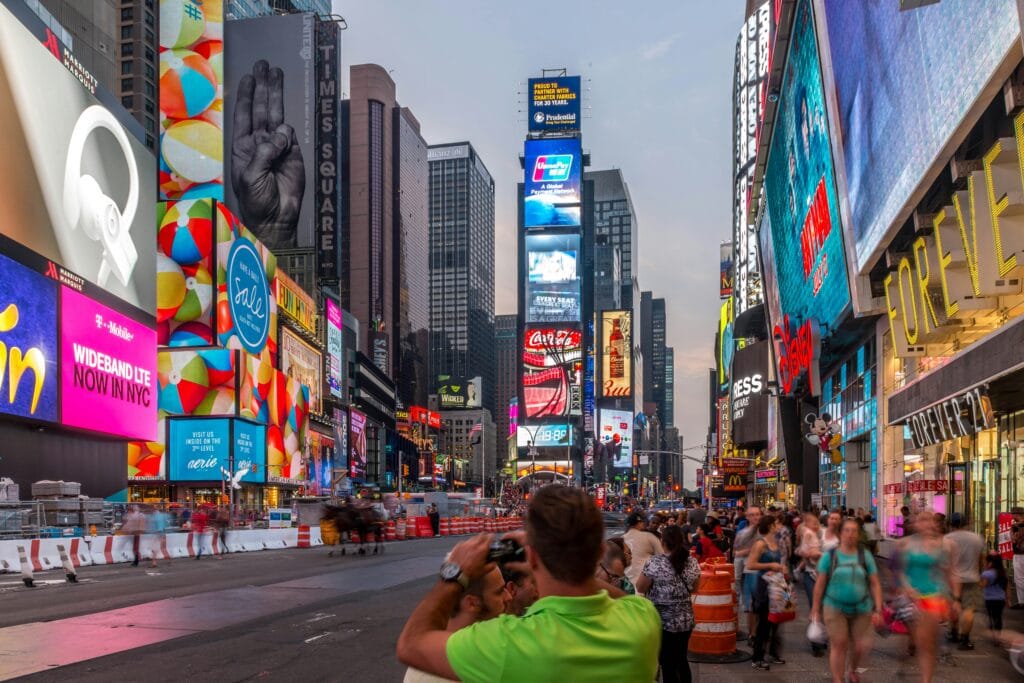Tokyo is a food lover’s dream come true with a wonderful fusion of culinary artistry, creativity, and history. From little street food vendors to Michelin-starred restaurants, the city is a gourmet paradise serving every taste. Tokyo offers an unmatched eating experience whether your taste is for sizzling yakitori from a secret izakaya, delicate sushi created by master chefs, or a comfortable bowl of creamy, umami-packed ramen. That’s why we have curated this Tokyo food guide for you, so that you focus only on food and leave the search part to us.
Though always changing with innovative techniques and bold fusion flavors altering Japanese cuisine, the city’s dynamic food scene is firmly anchored in history. Tokyo encourages guests to start a remarkable gastronomic journey with an infinite range of regional specialties, seasonal delights, and world-class ingredients.
Planning to visit Tokyo?
- Booking Hotels: Booking.com, Agoda, MakeMyTrip and Hostelworld.
- Booking Cheap Flights: Skyscanner and Cheapflights.
- Booking Tours: Viator and GetYourGuide.
- Renting a Car: Discover Cars.
- Travel Insurance: Heymondo. Get 5% off today!
Here is a closer look at several must-try Tokyo cuisine along with their development over time:
Sushi vs Sashimi
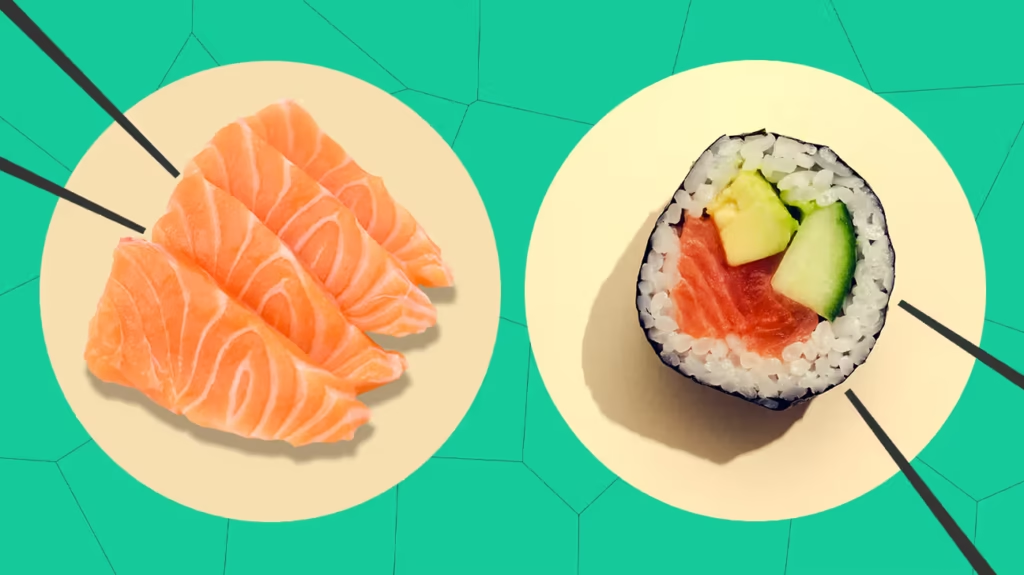
Eating sushi and sashimi completes every trip to Tokyo. Fresh, excellent seafood is available at the Tsukiji Outer Market, where traders present well sliced sashimi and nigiri. High-end sushi restaurants such as Sukiyabashi Jiro provide carefully created omakase menus, in which every piece of sushi is made with accuracy and attention, for a more sophisticated experience.
From its early Edo era beginnings as a fast-food item known as Edomae-zushi, sushi has changed dramatically. Originally, to preserve the seafood, sushi was created using fermented fish and rice. Refrigeration methods let fresh ingredients be employed over time, which produced delicate and polished sushi we know today.
Tokyo’s sushi is a world-renowned delicacy thanks in great part to the harmony of flavors, freshness of the fish, and quality of the rice. Modern sushi chefs today play with unusual ingredients, including truffle oil, wagyu beef, and even molecular gastronomy methods to push sushi forward.
Ramen
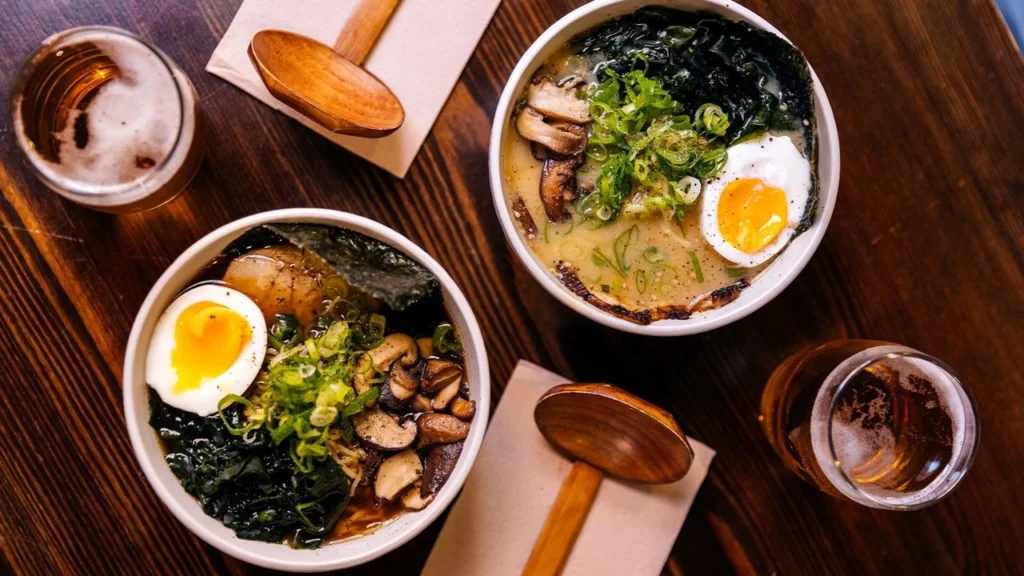
With many variants reflecting various regional styles, Ramen in Tokyo is a must-try. Famous for its tonkotsu, or pork bone broth, Ichiran lets customers personalize their bowl. Conversely, Afri is well-known for its yuzu shio (citrus salt), which presents a novel and interesting take on the venerable noodle meal. Tokyo has a ramen bowl for every taste whether your taste is for creamy miso ramen from Hokkaido or shoyu (soy sauce) ramen with a strong umami taste.
Originally Chinese noodle soup, ramen developed into a particularly Japanese meal with the addition of several broths and toppings. After World War II, ramen became a staple comfort food; improvements resulted in the creation of instant ramen, therefore making it available everywhere.
Tokyo’s ramen scene has grown throughout time, bringing distinctive variety such tsukemen (dipping noodles) and fusion tastes combining cheese, butter, or plant-based substitutes. From rich and creamy to light and refreshing, every ramen style offers unique depth of taste.
Tonkatsu
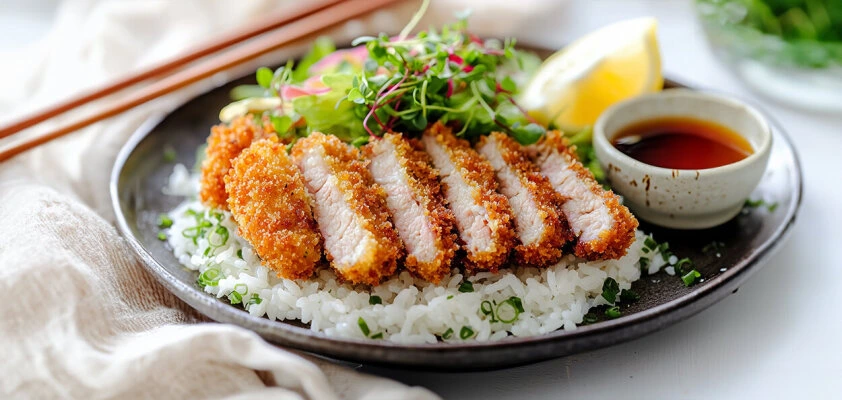
Deep-fried pork cutlets called tonkatsu are a staple food in Tokyo. A good taste results from the crispy, golden-brown covering enclassing succulent and juicy pork. Legendary for tonkatsu, Maisen in Omotesando offers guests perfectly made cutlets combined with finely shredded cabbage and a tart, salty tonkatsu sauce. Often presented with rice, miso soup, and pickles, the dish makes a well-balanced and substantial lunch.
Inspired by European breaded cutlets, Tonkatsu comes from the Meiji period of Japan. It was first presented with a knife and fork, but it changed to fit Japanese eating habits and was coupled with rice and chopsticks.
Variations include chicken katsu, menchi katsu (ground pork cutlet), and even wagyu katsu have surfaced over time providing distinct textures and flavors. Modern tonkatsu restaurants play about with slow-frying at lower temperatures for a juicier, more tender cutlet.
Okonomiyaki & Takoyaki
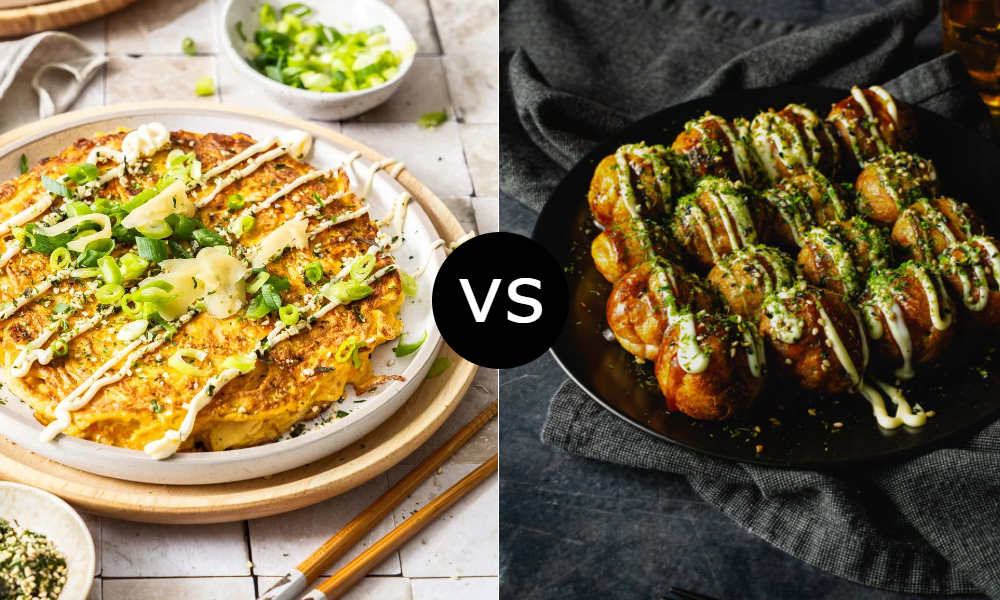
For those who enjoy street cuisine, takoyaki and okonomiyaki are must-eaters. Made with a flour, egg, shredded cabbage batter and a range of toppings including pork, shrimp, and cheese, okonomiyaki is a savory pancake. It’s fried on a hot griddle and topped with seaweed, bonito flakes, okonomiyaki sauce, mayonnaise.
Conversely, takoyaki are bite-sized octopus balls with crispy on the exterior and soft on the inside, topped with sauces and garnishes akin to okonomiyaki. Street markets and casual restaurants in Tokyo provide both meals rather well.
Originally a basic grilled meal from the Edo period, okonomiyaki first became well-known in Osaka and Hiroshima, each acquiring their own distinctive taste. Osaka’s blends the components into a batter; Hiroshima’s layers them.
Originally developed in Osaka in the 1930s, Takoyaki became a famous snack all throughout Japan very fast. Modern iterations of the classic flavors today incorporate cheese, kimchi, and prawns, so adding a twist. Taste and texture are delightfully contrasting in the crispy outside and mushy inside.
Kaiseki

Kaiseki is the best of Japanese fine cuisine for those looking for a sophisticated dining experience. A classic multi-course dinner, Kaiseki highlights seasonal foods with well chosen cuisine. Often containing sashimi, simmered cuisine, grilled fish, and elegantly presented sweets, each course is painstakingly created to accentuate the natural flavors and textures of the foods.
Excellent kaiseki experiences abound at restaurants like as Kagurazaka Ishikawa and Ryugin, where every element—from the tableware to the meal arrangement—is painstakingly examined.
Kaiseki came from the custom tea ceremony, in which matcha was presented alongside little, basic meals. It developed into a complex multi-course dinner reflecting Japan’s seasonal abundance throughout ages. With every meal meant to accentuate the next, the kaiseki philosophy stresses harmony, flavor, and balance. While maintaining the core of this great eating tradition, modern kaiseki chefs today include global influences and creative approaches.
Tokyo food guide – Best places to try famous dishes of Tokyo
Sushi & Sashimi
Sukiyabashi Jiro (Ginza) is a renowned Michelin-starred sushi restaurant.
Reputable for its flawless sushi crafting is Sushi Saito (Roppongi).
For a fresher, more relaxed sushi experience, head to Tsukiji Outer Market.
Ramen
Ichiran (various locations) – is well-known for its tonkotsu ramen that can be customized.
Afuri (Shinjuku, Ebisu) – renowned for its yuzu shio ramen with citrus.
Ramen Jiro (various locations) – which is well-known for its rich broth and thick noodles.
Tonkatsu
Mainsen (Omotesando) is well-known for its succulent, mouthwatering tonkatsu.
Tonkatsu Marugo, located in Akihabara, is well-known for its succulent, crispy pork cutlets.
Tonkatsu Narikura, located in Minami-Asagaya, is well-known for its premium pork and fluffy breading.
Okonomiyaki & Takoyaki
Tsukishima Monja Street (Tsukishima): A sanctuary for fans of okonomiyaki.
Gindaco (different locations): One of the most well-known chains of takoyaki restaurants.
A traditional and genuine okonomiyaki experience can be had at Sometaro Okonomiyaki (Asakusa).
Kaiseki
A Michelin-starred kaiseki experience can be found in Kagurazaka Ishikawa (Kagurazaka).
Ryugin (Roppongi): A blend of contemporary methods and customs.
Kikunoi (Akasaka): A sophisticated, artistically presented seasonal kaiseki.
Tokyo food guide – Best restaurants and cafes in Tokyo
1. Sukiyabashi Jiro (すきやばし次郎)
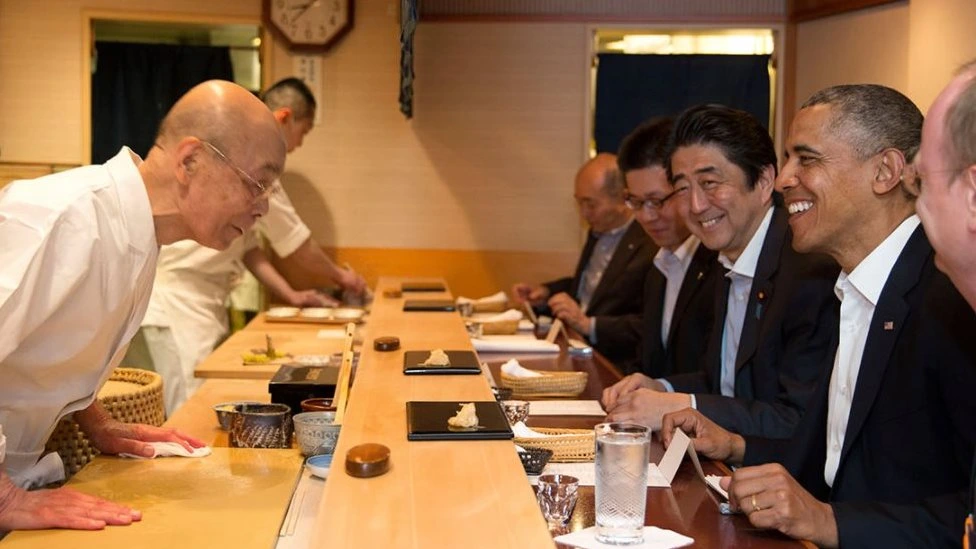
Location: Basement Level, Tsukamoto Sogyo Building, 4-2-15 Ginza, Chuo-ku, Tokyo
Sukiyabashi Jiro is an institution not just a restaurant. Under the direction of the renowned sushi chef Jiro Ono, this restaurant has transformed the craft of sushi-making by emphasizing simplicity, accuracy, and a relentless quality commitment. Using the best seasonal fish, aged rice, and a special vinegar blend, every piece of sushi is created with exquisite craftsmanship.
For gourmands all around, the omakase experience—where Jiro personally chooses the finest ingredients of the day—has become a bucket list destination. For those who enjoy sushi, this is the best pilgrimage site with a Michelin 3-star rating and documentary Jiro Dreams of Sushi included. However, its exclusivity means reservations must be made far in advance, and acquiring a seat is a challenge in itself.
Famous Foods: Omakase sushi, with the best seasonal seafood—especially tuna, squid, and uni.
Best Time to Visit: Reservations are required and ought to be made months ahead. Popular for a rather more reasonably priced experience is lunch service.
About ten counters, worth of chairs guarantee a close-knit and very customised dining experience.
2. Ichiran Ramen (一蘭ラーメン)
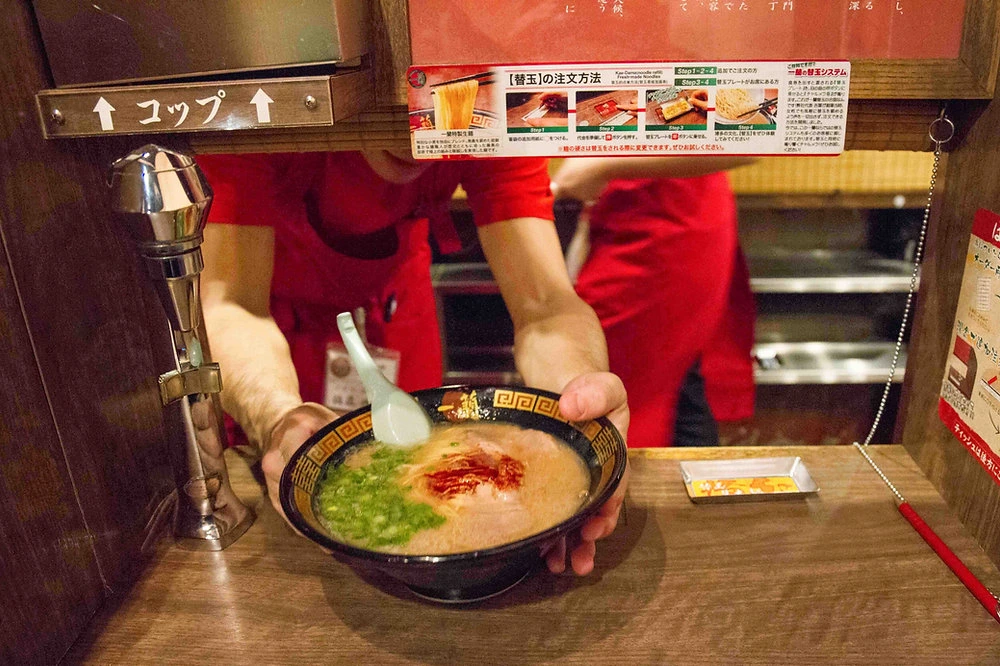
Location: Multiple branches across Tokyo, with one of the most popular in Shibuya (1-22-7 Jinnan, Shibuya-ku)
Ichiran is an experience enveloping you in the art of eating, not only a ramen shop. Known for its individual dining booths, Ichiran allows diners to focus entirely on their steaming bowl of tonkotsu ramen without distractions. From spiciness degree to garlic intensity, the rich, creamy pork-bone broth can be tailored to fit individual tastes by combining with appropriately firm noodles.
After a demanding day of sightseeing Tokyo, its 24-hour availability in several places makes it ideal late-night venue. This is a classic must-visit regardless of your travel style—solo or group—or your inclination for peaceful dining.
Famous Foods: Signature tonkotsu (pork bone broth) ramen with tailored flavour tastes are famous foods.
Best time to visit: Ideal after a night out; late evenings (open 24 hours in many places). Steer clear of peak lunch for shorter wait times.
Most places feature 20–30 counter seats with distinctive solitary dining booths for a really immersive ramen experience.
3. Narisawa (ナリサワ)

Location: 2-6-15 Minami Aoyama, Minato-ku, Tokyo
Narisawa is a restaurant that merges high-end gastronomy with nature, offering an immersive dining experience that honors Japan’s seasonal landscapes. Inspired by the mountains, rivers, and woods of Japan, Chef Yoshihiro Narisawa uses locally grown sustainably produced products. Every meal reflects the balance between food and environment and is a bit of edible artwork.
This is the perfect place for anyone looking for a distinctive fine-dining experience outside of conventional Japanese cuisine given its Michelin 2-star rating and worldwide praise. Every visit is an unforgettable trip through tastes, textures, and smells on the tasting menu.
Famous Foods: Japanese wagyu, sustainable seafood, “Satoyama Scenery” (nature-inspired seasonal cuisine)
Best time to visit: Dinner service provides the whole tasting menu experience. Best time to visit is evening. Reservations are required well in advance.
About 26 seats allow for a personal fine-dining experience.
4. Kawaii Monster Café
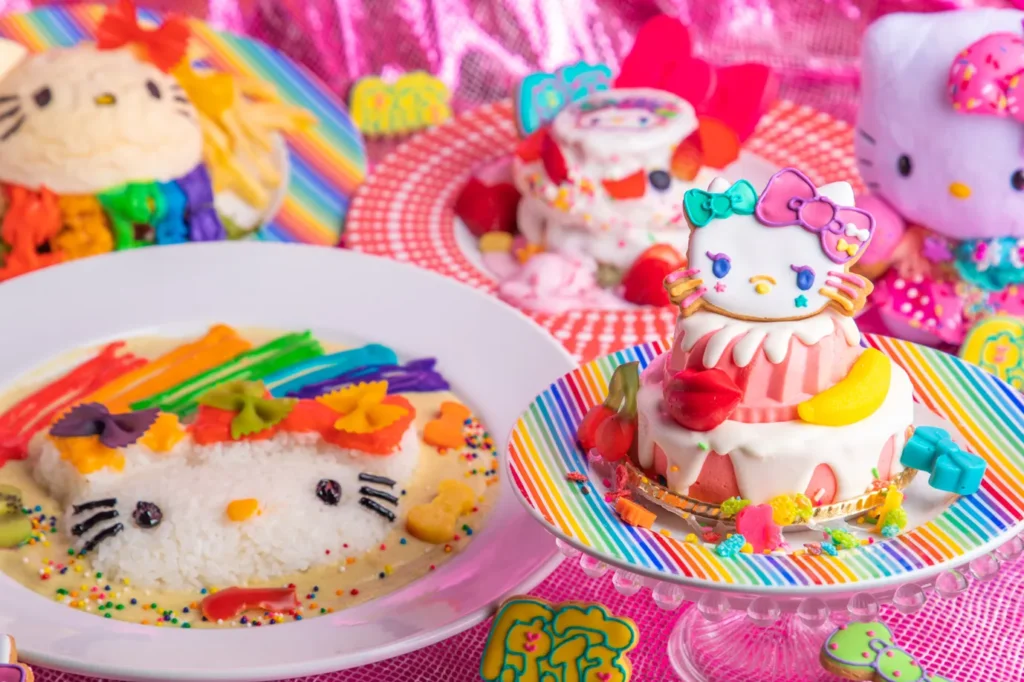
Location: YM Square Building 4F, 4-31-10 Jingumae, Shibuya-ku (Harajuku area)
The Kawaii Monster Café is a dream come true if your tastes in design are wild, vibrant, and playful. Located in Harajuku, the heart of Tokyo’s kawaii (cute) culture, this café is a blend of fantasy, neon lights, and wacky food creations. The experience here is like entering an anime paradise with themed dining areas, live events, and waitstaff dressed in elaborate monster-themed costumes.
Comprising rainbow-colored spaghetti, brilliant pink hamburgers, and over-the-top desserts, the menu is as wacky as the décor. It’s a great spot unlike any other in Tokyo for Instagram-worthy pictures and an interesting, unusual experience.
Famous Foods: lavish desserts, monster burgers, and rainbow spaghetti.
Best time to visit: For the whole experience with live events, best time to visit is in afternoon or early evening. Weekends are busier.
There are about 200 seats dispersed among creatively themed areas including Mushroom Disco, Mel-Tea Room, etc.
5. Flipper’s Pancakes

Location: 1-2-18 Jinnan, Shibuya-ku, Tokyo (Shibuya branch)
For those who enjoy pancakes, Flipper’s is a heaven; its extra-fluffy, soufflé-style pancakes taste as if clouds melting in your tongue. Premium eggs and fresh dairy are used in these ultra-light designs, producing a quite airy feel.
Whether covered with classic maple syrup, caramelized almonds, or fresh fruit, every mouthful is a sweet treat. A leisurely breakfast or a noon treat would be ideal in the café because of its pleasant and cosy vibe. For people who appreciate Japanese dessert culture, Tokyo’s Flipper’s is absolutely must-visited location.
Famous Foods: Famous foods include fluffy soufflé pancakes topped with seasonal fruits, maple syrup, and whipped cream.
Best Time to Visit: Mornings and weekdays for shorter wait times (weekends have big waits).
About forty to fifty seats provide cosy café ambiance.
6. Best animal cafes in Tokyo (猫カフェ / フクロウカフェ / ハリネズミカフェ)
From the hectic Tokyo streets, animal cafés provide a complete, leisureful, and interesting retreat. These cafés offer a special approach to engage with animals while savoring a warm drink, whether your taste is for the cozy friendship of cats, the enigmatic presence of owls, or the lovely quirkiness of hedgehogs. Every café is meant to provide a quiet space where guests might relax, snap pictures, and interact with these cute animals to help them decompress.
Cat Cafe in Tokyo

Location: MoCHA Shibuya (Udagawa-cho 32-12, Tokyo)
Famous Foods: Coffee, tea, small appetisers.
Best time to visit: Early afternoons are the ideal time to visit for a laid-back experience since cats are more active.
Seating Capacity: Around 20–30 seats, with comfy sitting for interaction with cats.
Owl Café in Tokyo

Location: Akiba Fukurou (67 Kanda Neribei-cho, Chiyoda-ku)
Famous Foods: Simple drinks (with an eye toward the owl experience)
Best Time to Visit: Evening slots give a more calm environment.
Seating Capacity: Around 10–15 seats, with designated interaction periods for owl handling.
Hedgehog Café in Tokyo
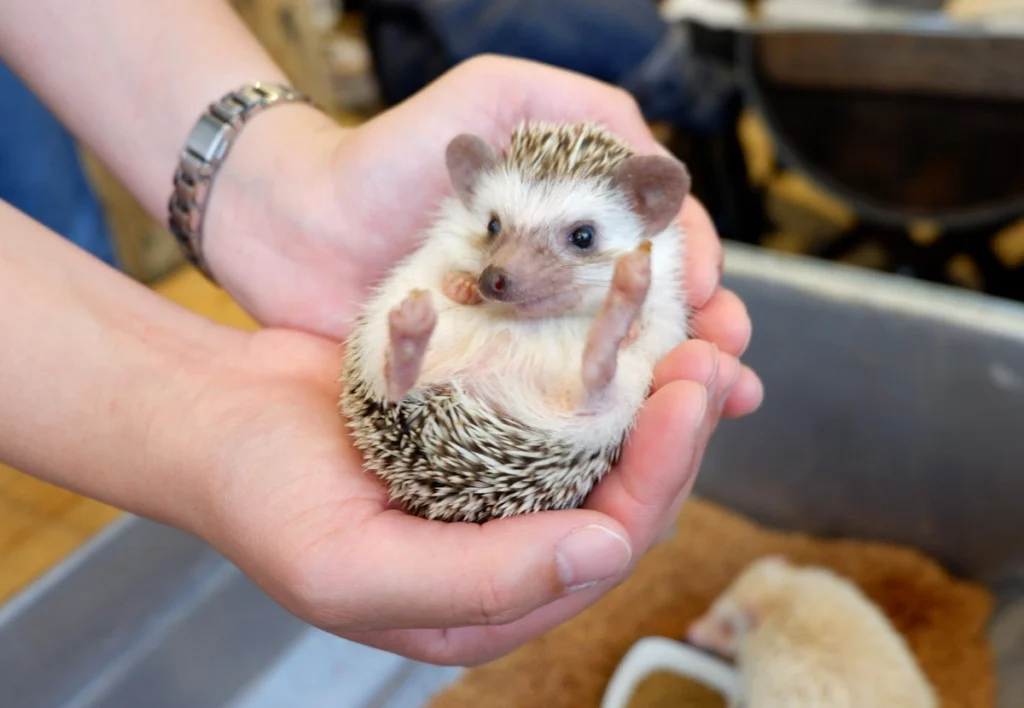
Location: Harry Harajuku (Jingumae 1-13-21, Shibuya-ku)
Famous Foods: Tea, soft drink
Best Time to Visit: Late mornings or early afternoons when hedgehogs are most active
Seating capacity ranges from 10 to 20 rows with separate enclosures for hedgehogs.







